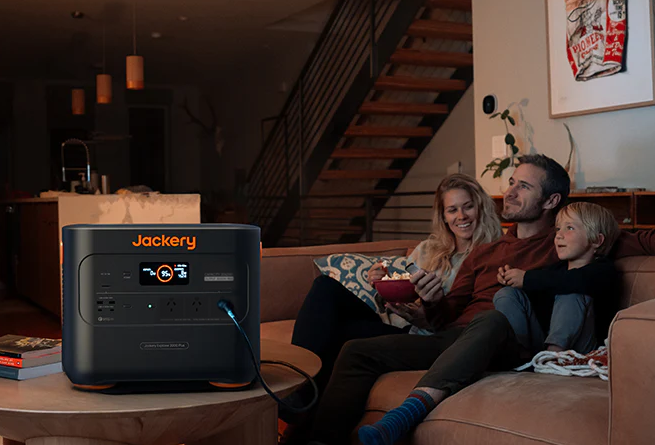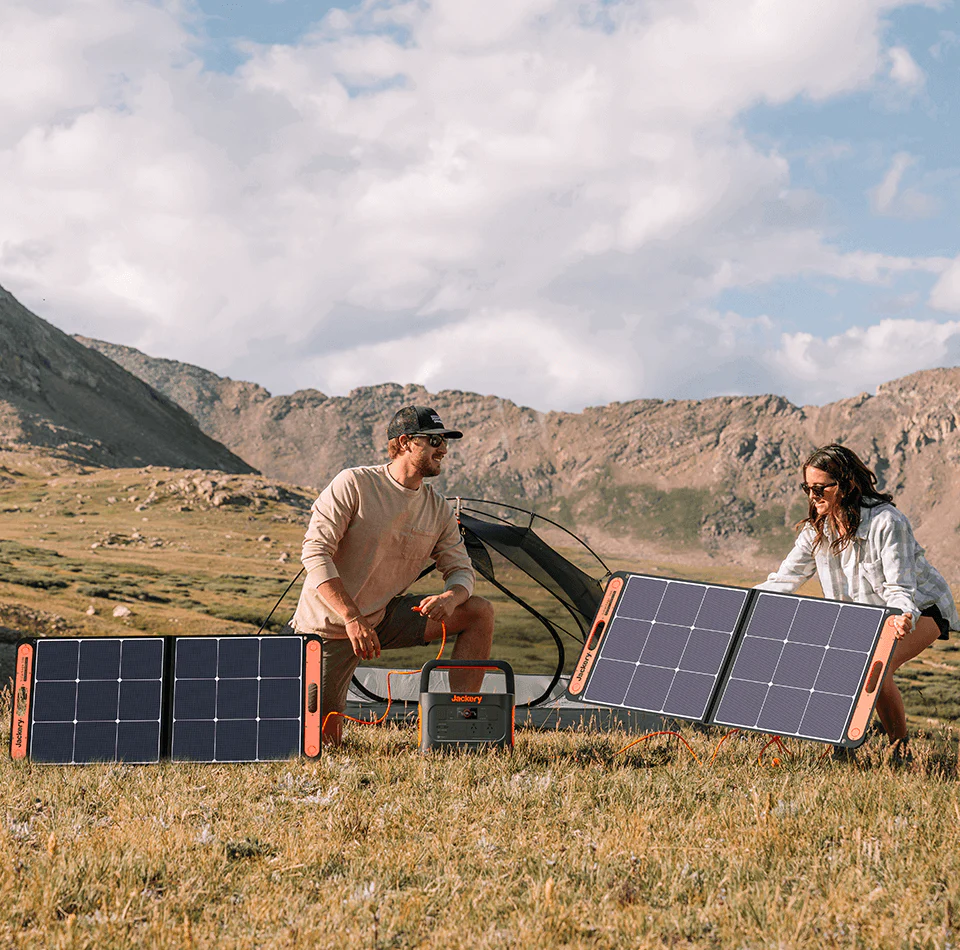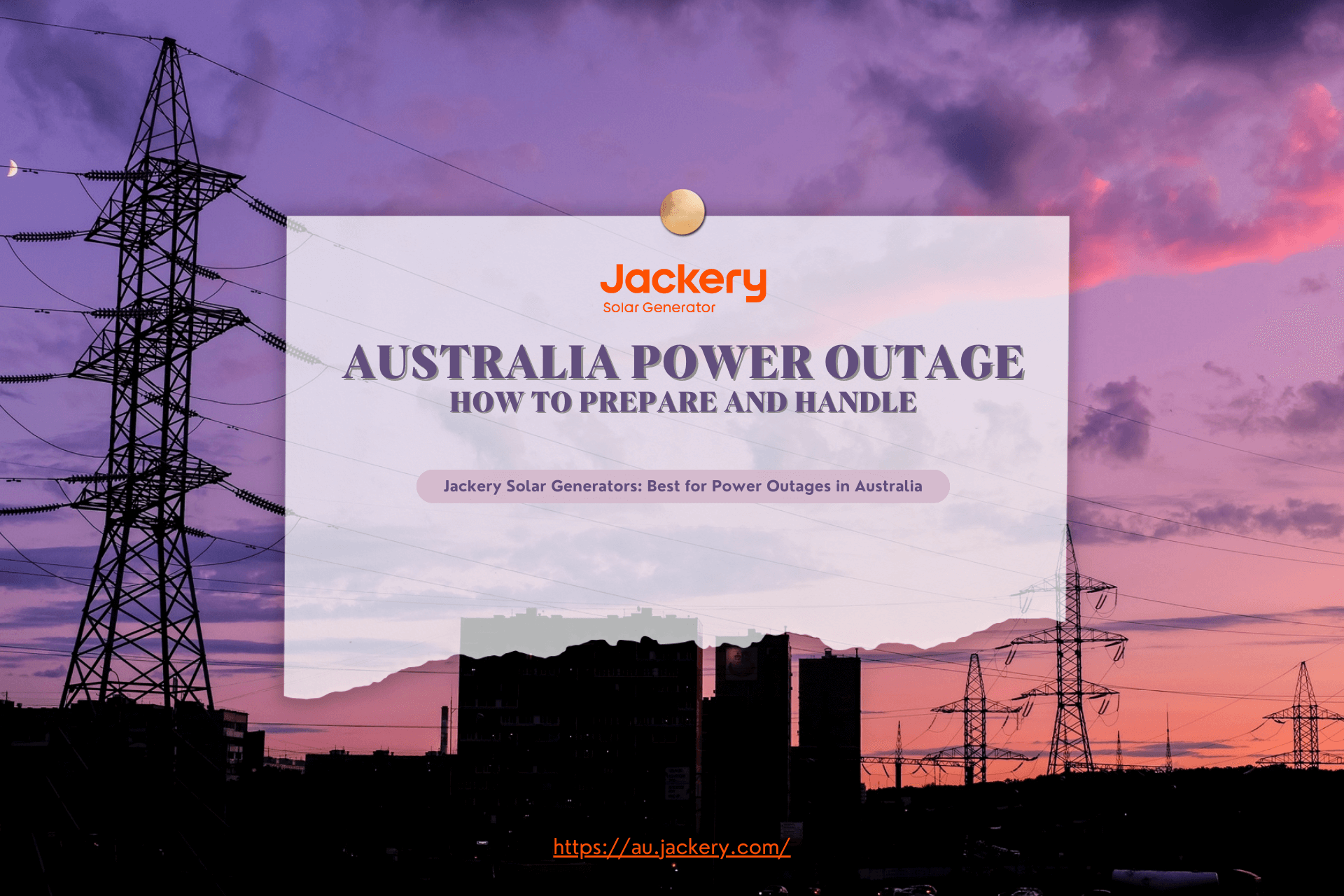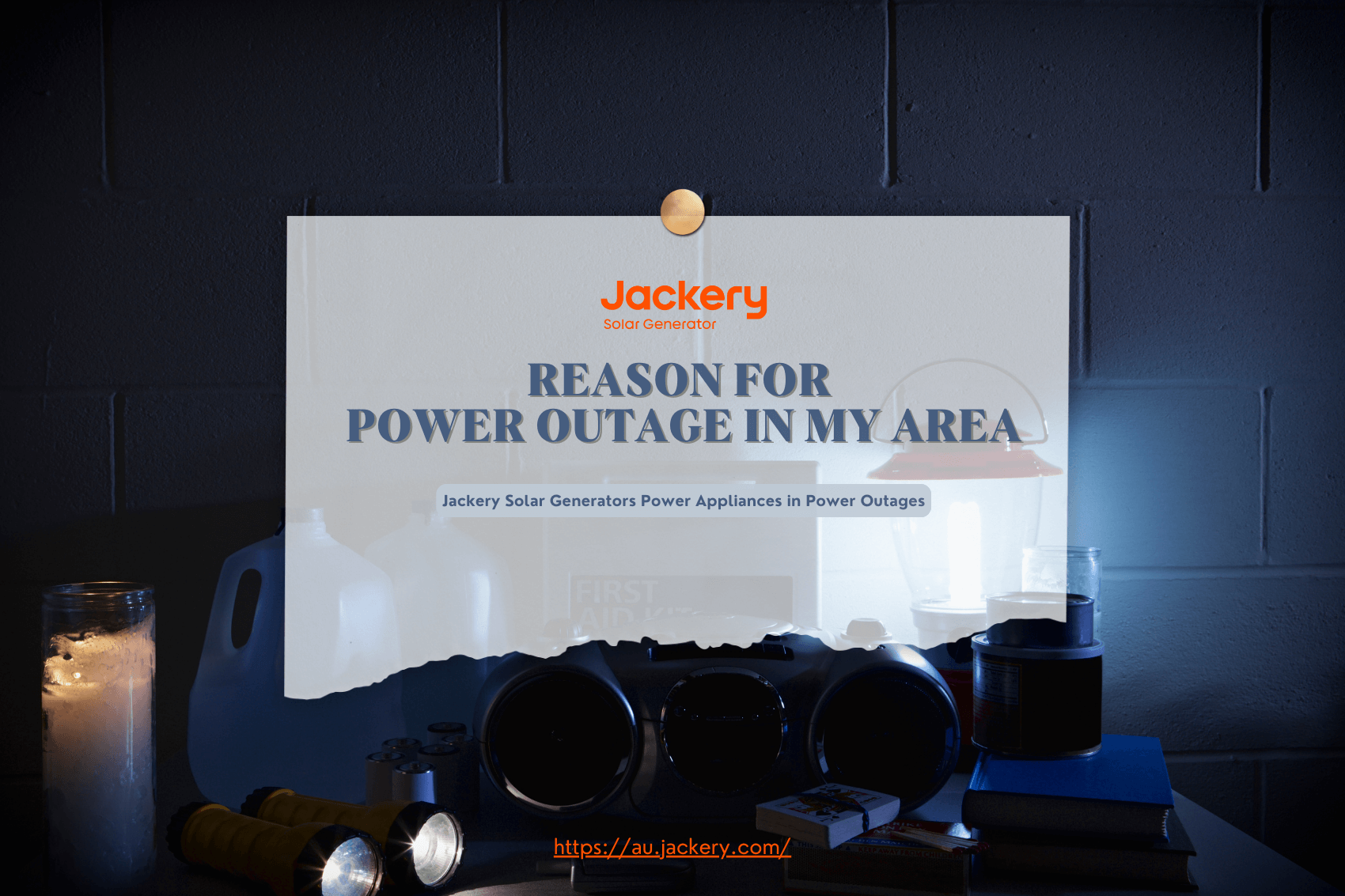The Earthquakes and Power Outages in Australia
When considering the impact of power outages on our daily lives, it becomes clear how essential a portable power station can be in times of crisis. Let's delve into the ways these outages affect our daily routines and the indispensable role that a portable power station plays in mitigating these disruptions:
Impact on the Electricity Grid
Earthquakes, unlike storms, can cause sudden and catastrophic damage to the electricity grid. The intense ground shaking can topple power lines, damage transformers, and compromise substations, leading to extensive outages. Furthermore, the seismic activity can trigger landslides or structural collapses that further disrupt the electrical infrastructure. Wet and fallen debris, coupled with damaged underground cables, may cause short circuits and electricity surges, exacerbating the disruption.
Effects on Critical Needs
Food Storage: One of the primary concerns during a power outage is the preservation of food. Earthquakes can occur without warning, and the resulting power outage can leave refrigerators and freezers inoperative. Without electricity, these appliances quickly lose their ability to maintain safe temperatures for perishables, leading to rapid food spoilage, posing health risks, and resulting in significant waste. A reliable power station (portable) can keep your refrigerator and freezer running, completely mitigating these issues.
Communications: Staying informed and connected is crucial during emergencies. However, power outages can render phones, tablets, and radios inoperative. With the grid down, communication becomes difficult, making it harder to receive emergency updates or contact loved ones. Equipped with a portable power station, you're empowered to keep your communication devices charged, allowing you to access crucial updates, monitor seismic activities, and maintain contact with emergency services or loved ones, even when the power grid fails.
Lighting Issues: Darkness following an earthquake is not merely inconvenient; it poses a significant safety threat. Homes plunged into darkness increase the risk of accidents such as tripping, falling, or bumping into objects, especially with debris scattered around. Additionally, power outages at night can heighten feelings of fear and anxiety during such a traumatic event. A portable power station can power lamps and flashlights, providing essential visibility and maintaining a sense of calm and security throughout the aftermath of the quake.
Heating or Cooling: Maintaining comfortable temperatures is particularly challenging during power outages caused by earthquakes. Earthquakes can strike in any season, and the lack of power can make dealing with the weather unbearable. During the summer, the loss of power can render fans and air conditioners useless, making the heat stifling. Conversely, winter outages can leave you shivering without the ability to run heaters. A portable power station can support small fans or heaters, ensuring your family's comfort regardless of the external conditions, and helping to prevent conditions like heatstroke or hypothermia.
The Advantages of a Power Station (Portable)
Solar power stations (portable) offer several advantages, several advantages, particularly in the context of Australia's seismic activities:
Independence
Unlike conventional generators that depend on the availability and cost of fuel, solar power stations (portable) offer unparalleled independence. They utilize the sun's energy, a free and abundant resource in Australia, to generate power. This eliminates the need to rely on the grid or scramble for fuel during emergencies like earthquakes. By simply positioning solar panels to face the sun, these stations can produce a steady supply of electricity, ensuring that essential home appliances continue to function even when the grid is down.
Environmental Protection
Traditional turbines are notorious for their pollution, releasing harmful emissions into the environment. In contrast, solar power stations (portable) represent a leap forward in environmental stewardship. They operate silently and produce clean, renewable energy, significantly reducing the carbon footprint. This is particularly beneficial in a country like Australia, which is increasingly focused on sustainable practices. The ability to power homes through natural disasters without contributing to air pollution.
Long-term Savings and Self-sufficiency
Unlike traditional generators that necessitate ongoing fuel purchases, solar power stations (portable) are a one-time investment that pays dividends over time. The initial cost may be higher, but the savings on fuel and reduced dependence on grid electricity make solar power a wise financial choice. Additionally, the self-sufficiency provided by solar power can be a game-changer during power outages, reducing the risk of food spoilage and associated financial losses.
How to Choose a Power Station (Portable)?
Australia's unpredictable earthquakes demand a reliable backup energy solution. While solar power stations (portable) have emerged as a clear winner compared to conventional turbines, the variety of choices in the market can be overwhelming. Here's a breakdown of critical factors to consider when choosing an appropriate solar-powered station for your needs:
Power Matching
- Understanding Power Needs: The first and most crucial step in choosing a power station (portable) is understanding your family's power requirements during a power outage. List the vital appliances such as your refrigerator, lighting fixtures, phone chargers, and any small fans you need to run. Once you have this list, calculate the total wattage these home appliances require.
- Accounting for Surge Wattage: Remember, some appliances have a higher surge wattage than their running wattage, which is essential to consider. This information will help you select a portable power station with sufficient wattage and battery capacity to meet your needs. Avoid undersizing your power station (portable); it's always better to have some extra capacity for unexpected conditions.
- Considering Runtime: After determining the wattage of the product you will buy, examine the information on the websites to find the answer to how long portable power stations last. The answer to this question concerns how long you will operate which device. For those who are new to power stations (portable), common queries often include, "Can a portable power station run a refrigerator?" The answer to this is a resounding yes. Take, for instance, the Jackery Explorer 2000 Plus Portable Power Station, which is capable of continuously powering a refrigerator with 2200W for approximately 2.3 hours.
This kind of information is essential for gauging the station's effectiveness in meeting your specific needs and ensuring you have a clear expectation of its performance during an outage.

Brand Reputation
When it involves a power station (portable), brand recognition is paramount. Opting for a nicely hooked emblem like Jackery ensures a reliable and well-made product. Reputable manufacturers prioritize protection, overall performance, and customer pleasure. They offer comprehensive warranties and feature terrific customer service groups to assist you with any questions or problems that could get up to date. Investing in a trusted brand provides you peace of mind, knowing you've got a reliable energy source during an earthquake, allowing you to focus on maintaining your family's safety.
Technical Specifications
Once you've identified the required wattage for your power needs, the next step is to scrutinize the technical specifications of the power station (portable)). Here's what to look for when comparing different models and brands:
- Battery Type: LiFePO4 batteriesare often the top choice due to their lightweight design, extended lifespan, and superior energy transfer capabilities. They offer a dependable power source for your essential devices.
- Solar Panel Efficiency: Higher efficiency panels can recharge your power station (portable) more quickly, capitalizing on the available solar energy. This is especially valuable in sunny locales or during extended power outages where the sun is the primary power source.
- Charging Speed: It's essential to understand how quickly the power station (portable) can be recharged, which is related to the battery capacity and the charging source. A faster recharging rate ensures minimal downtime during an outage. When considering the question "How do you charge a portable power station," know that options typically include solar panels, mains electricity, or a car adapter. Ensure the power station you select is compatible with these various charging methods for maximum convenience and reliability.
- Charging Options: The versatility of charging options is another aspect to consider. How you charge a power station (portable)can significantly affect its utility and convenience. Stations that support charging via solar panels, wall outlets, and car adapters provide flexibility, allowing you to recharge in a variety of situations. This feature is particularly beneficial for those who want to ensure their power station is always ready for use, regardless of the circumstances.
Jackery Explorer 2000 Plus Portable Power Station
Jackery Explorer 2000 Plus Portable Power Station is robust and versatile, offering significant advantages for Australian families, particularly in the face of earthquakes that can cause power outages. Let's examine its standout features:
High Power Output
Boasting a 2042.8Wh capacity and a max AC output of 3000W with a 6000W surge peak, the Jackery Explorer 2000 Plus Portable Power Station ensures that essential appliances such as refrigerators, TVs, lights, and medical equipment remain operational during emergencies. This makes it an invaluable asset during and after earthquakes when the power grid might take days or even weeks to restore.
Capacity and Expandability
Jackery Explorer 2000 Plus Portable Power Station comes with a substantial 2 kWh base capacity, providing ample power for critical devices during outages. Its scalability is a standout feature, allowing the capacity to be increased to 12 kWh by integrating additional battery packs. This flexibility is invaluable for those living off-grid or needing to withstand prolonged power disruptions.
Multiple Charging Way
Jackery Explorer 2000 Plus Portable Power Station supports three charge ways with the ability to achieve a full solar charge in just 6 hours using 6 Jackery SolarSaga 100W Solar Panels. For those moments when solar charging isn't an option, it can also be quickly recharged via wall charging in approximately 1.7 hours or the car charging over 25 hours. This versatility in charging options ensures that Australian families can stay connected, powered, and safe, regardless of the weather's fury or the grid's instability.
Safety Tips for Earthquakes
In the face of an unpredictable earthquake, taking the right precautions can significantly reduce risks and ensure you and your family are safe. While technology like portable power stations can help mitigate the effects of an earthquake-induced power outage, physical safety precautions should never be overlooked. Here are some essential safety tips to consider.
1. Preparation
Seismic Monitoring: Staying informed about the seismic activity in your area is the first step towards preparedness. Many regions have seismic monitoring systems in place, providing real-time updates on potential seismic events. Ensure that you are subscribed to emergency alerts and keep a radio or a charged smartphone at hand, especially during periods of increased seismic activity.
Secure Your Surroundings: Before an earthquake occurs, secure any heavy furniture, appliances, or other objects that could fall during a tremor. This can prevent serious injuries and property damage. Anchor tall bookshelves, cabinets, and water heaters to the walls. Secure televisions and other heavy items with straps or brackets.
Stock Up on Essentials: Preparing an emergency kit is another critical step. Include flashlights, batteries, a portable radio, non-perishable food, bottled water, a first-aid kit, and a portable power station. These items can make a significant difference in your comfort and safety during and after a seismic event.

2. Shelter Selection
During an earthquake, the first priority is to protect yourself from falling objects and debris. Identify safe spots in each room, such as under sturdy furniture or against an interior wall away from windows. Avoid areas where objects like mirrors or light fixtures could fall. Practice "Drop, Cover, and Hold On" drills with your family, so everyone knows what to do when the ground starts shaking.
3. Power Outage Prevention
Electrical Safety Check: Conducting a pre-earthquake safety check on your home's electrical system can prevent hazards during an earthquake. Ensure that all electrical connections are secure, and consider investing in surge protectors to safeguard your devices.
Backup Systems: Backup systems are essential for maintaining power to your most crucial devices. Ensure your portable power station is charged and easily accessible. Regularly test it to ensure it's in working order. Additionally, consider installing a home surge protector to prevent damage to your devices when the power returns after an outage.
Following those safety recommendations and utilizing a dependable power station (portable) can considerably improve your preparedness and ensure your family's well-being throughout earthquakes. Remember, a little making plans and precautions can go a long way in retaining you secure and snug even when the electricity is going out.
Conclusion
A power station (portable) is essential for maintaining safety and convenience during Australia's earthquakes. With reliable backup power, households can ensure critical devices remain functional. Jackery stands out as a top recommendation due to its reputation for quality and efficiency. With Jackery's reliable and efficient power stations, you can face earthquakes with confidence, knowing you have the power to keep your family safe and comfortable.
Reference
Available at:


























































